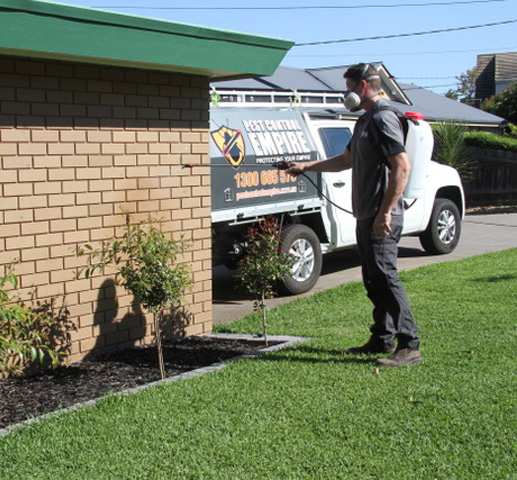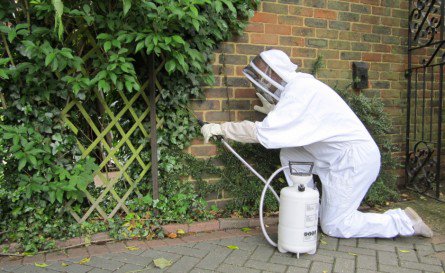Find out if your home is safe.

As with all pests, the best way to reduce the likelihood of a termite invasion is to follow an integrated pest management approach. Unfortunately, the way we have constructed our houses and landscaped our yards has often produced a site and environment conducive to an attack.
Two ingredients required for survival include water and cellulose – with the latter found in wood. Often we also live in a locality that increases termite risk, such as an area close to dense bushland. While for termite control we cannot control the external environment outside our property boundary, we can control the environment within it. We will now detail what a termite will require to survive and how we can remove or reduce these resources in order to reduce the likelihood of an attack on our homes.
Water – termites are very dependent on the availability of water. They are susceptible to desiccation (drying out) so a constant source of water is vital for survival. High moisture levels in the ground will attract these insects and if moisture remains for prolonged periods of time, this will encourage foraging. It will usually only be a matter of time before a trailblazing termite finds his way to your home – and then invites thousands of his friends!

These are just some of the avenues that may create a suitable water source for a termite colony. If any of these are present, the appropriate trades person such as a plumber for a tap leak, should be engaged to repair or rectify the issue.
High Moisture Content – an environment that is high in moisture content – is also of concern. The most common site where this problem will exist is a sub-floor. The sub-floor area is a common entry point for termites into your home.
Steps should be taken to increase ventilation in a sub-floor area and include:
Proper under floor ventilation will keep the environment dry which will in turn reduce the risk of a termite infestation and wood decay.
Food: termites extract the cellulose from timber and wood products that they require for survival. If any piece of timber or a wood product is in direct contact with the ground the risk of an attack will increase. The following are examples of timber that may contact directly with the ground:
You may not even be aware of some of the potential food sources that exist around your home. In previous years, it was not uncommon for builders to bury unused or excess wooden building materials underground, or under a patio that was then covered over and inaccessible. Thankfully we now have a more stringent and enforceable building code that prohibits this type of activity. Nevertheless, many of us live in older homes to which this practice was commonplace. Not only do these items make a suitable food source, they also provide an ideal nesting site.
Identification of any appealing conditions that are present in and around your home is just the first step in an effective termite management plan for any building. The second step, obviously, is to remove or limit these identified conditions.
A thorough inspection of the home, including the sub-floor if accessible, should then be conducted by a pest control professional. You should engage a company with extensive experience in this field of service, as the consequences of selecting a company with inadequate knowledge and experience could have dire financial consequences.
The intention of both of these systems is only to reduce the risk of hidden attack. These systems force these pests to find alternate ways into your home other than through concealed areas, thus exposing themselves via their mud tubes / tunnels. This is why it’s vitally important to have a pest control company conduct an inspection at least annually to identify whether a colony has exposed itself.
Termite Control management for new building work must comply with Australian Standard 3660.1. We are conversant with this standard and comply with its standards. We also offer services to eliminate termites found in and around existing buildings and structures. This is also covered by Australian Standard 3660.2. We’re also conversant with this standard and again we comply with its designated guidelines.

These systems are effective but require time and patience to take full effect.
We are leaders in our field and take pride in our strong industry reputation. We know first hand the misery and heartache a termite infestation can cause and we will do everything in our power to prevent this from happening to you. To discuss termite control with a technician contact 1300 665 573 or complete the Contact Us form and we will respond to your enquiry as soon as practicable.
Copyright 2020 Pest Control